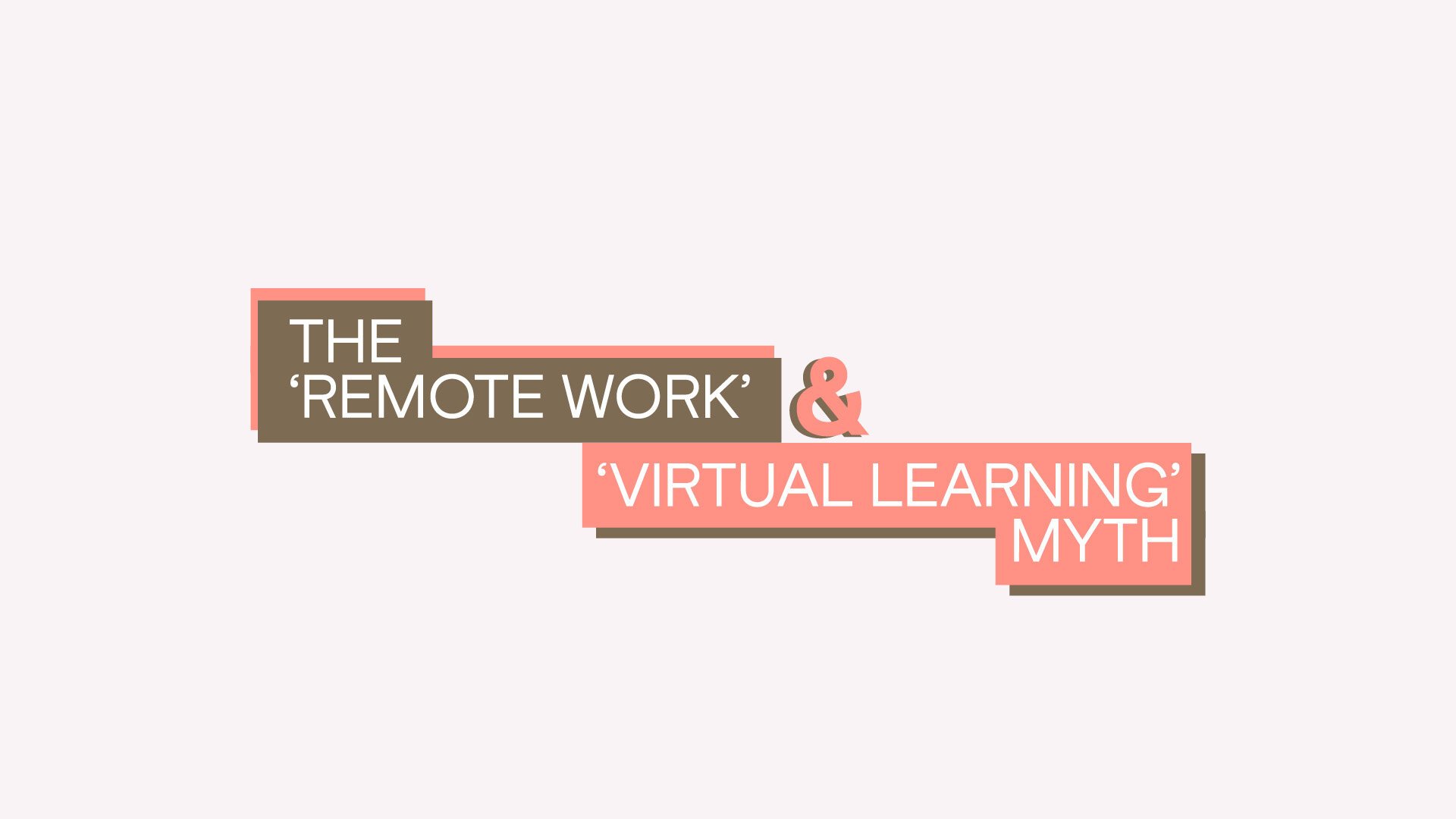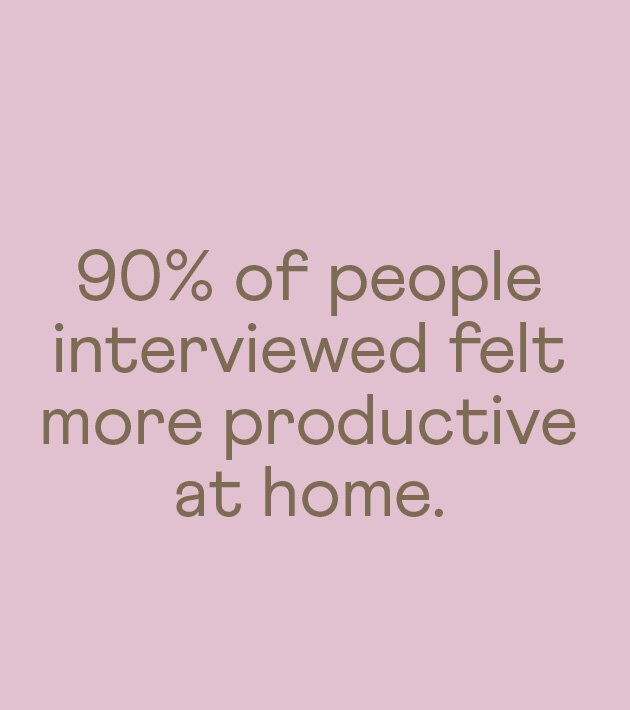THE ‘REMOTE WORK’ AND ‘VIRTUAL LEARNING’ MYTH
Can we just call it what it is:
‘work’ and ‘learning’.
Remember when ‘digital marketing’ was a thing?
Back in the 90’s, parallelling the rise of the internet, a rash* of consultants and self-proclaimed digital agencies appeared spruiking digital (slash online) marketing as the Next Big Thing.
Two decades later, the term sounds frightfully outmoded.
It’s not that it went the way of cassettes or VHS tapes — quite the opposite. Few people talk about ‘digital marketing’ because it’s simply ‘marketing’. Digital is just a channel; part of a comprehensive strategy with the purpose of raising awareness and compelling people to buy.
In the not too distant future, no doubt we’ll look back at the terms ‘remote work’ and ‘virtual learning’ with similar derision. Because once again, it’s focusing on the thing — the channel — rather than the reason for its existence.
The tools to facilitate virtual learning and remote work have been around for over a decade, and most forward-thinking companies already comprised an element of both. The pandemic simply shifted the emphasis to these channels, a catalyst for rapid change on a global scale.
So as LinkedIn swells with articles by overnight experts caught up in the latest business fad, let’s return to the fundamentals.
What are we actually trying to accomplish?
In most cases, the answer is simple: better collaboration; better performance; increased engagement; a great employee experience — these objectives remain the same.
Channels come and go — the constant is people. Technology is only one half of the connection equation; a tool to deliver consistent, engaging and impactful experiences throughout all stages of the employee lifecycle.
So — with dispersed teams and greater flexibility around where and how people work, as well as the possibility of future pandemics, how do we set people up to work together effectively to achieve a common goal, while also staying happy and healthy? And how do we do it when face-to-face isn’t an option?
In most cases, the answer is simple: better collaboration; better performance; increased engagement; a great employee experience — these objectives remain the same.
‘Remote work’ is just ‘work’ — with better communication
If anything positive came out of the pandemic, it’s that it proved that remote work… works. A recent YouGov survey found 90 per cent of people interviewed felt more productive at home. Another study found 48 per cent of remote workers exhibit more discretionary effort, compared to 35 per cent of non-remote workers.
Increasingly, ‘work’ is seen as something you do, not a place that you go. Yet despite many organisations making the necessary adjustments to operate through the pandemic, long-term success requires more significant changes.
It requires looking at the bigger picture. Remapping and redesigning the employee experience across a day, week, year and career to consider the impact of working remotely. Updating communication strategies to consider virtual touchpoints. Understanding what platforms are available and how to use them effectively.
Most importantly — and more than ever — good communication is crucial.
Where cultural rituals and relationships evolve naturally when people are physically in the same place, these now require a more intentional focus.
Communication with remote teams should consider more than just the transactional interactions needed to get the work done — it should include a relational component to build culture, share purpose, foster trust and transparency, and mitigate loneliness and isolation. It should ensure people feel supported, and provide them with the sense of working together as a team to achieve a common goal.
Fortunately, the technology to enable communication teams working remotely has been available for over a decade. From asynchronous comms to project management to onboarding automation, there are countless platforms that allow us to connect with people and teams, regardless of geography.
Yet it isn’t enough to fire off a few messages on Slack or dump a bunch of policy and procedure documents into Enboarder. This wouldn't make for a good experience in a traditional work environment, and it certainly doesn’t contribute to a great remote work experience either.
Instead, virtual channels require messaging to be filtered through a human lens.
This means considering how people naturally communicate virtually. What is the ideal rhythm of communication; the touchpoints and rituals? How do we share emotion, while ensuring tone and intent isn’t misinterpreted without physical cues? And how do we adapt language to suit written and virtual mediums?
These are just a few of the questions that can help us communicate better over virtual channels.
‘Virtual learning’ is just ‘learning’ — with greater empathy
In the same way that digital marketing didn’t replace traditional marketing channels, virtual learning will (and should) never replace in-person learning. Ideally, it should exist as part of a more comprehensive multi-channel learning experience.
The current trend towards virtual learning is obviously being driven by accessibility. With face-to-face training restricted due to lockdowns, physical distancing and travel bans, virtual channels make sense. However, they introduce the same challenges as remote work — namely, how to humanise the delivery of information.
No matter the channel, for training to make a difference it has to be engaging and memorable. And that isn’t a result of production value or the technology that enables it. It’s about the content.
Few people are captivated by dumps of technical information. Instead, a great learning experience understands the audience, then provides them with relevant and easily digestible information, in the right format, at the right time, using appropriate language, and the right channels.
It should surprise and delight, but above all, it should pique curiosity. By opting in and choosing to learn, people are far more engaged and cognitively primed to retain and recall information.
Perhaps the biggest mistake is treating virtual learning as a one-size-fits-all solution. Yes, these channels allow training to be delivered consistently and repeatedly to a vast and dispersed workforce. Yet language, cultural values, literacy, and assumptions and expectations about work all vary considerably between job function and location.
In face-to-face training, knowledge of the group and the ability to read the room allow a facilitator to adjust content and delivery in the moment, according to context. Virtual channels (with the exception of live workshops) require these considerations to happen before delivery. This means designing a base learning experience with custom elements to suit different audiences.
Finally, the aspect of timing is often overlooked in virtual learning. On-the-job training allows people to receive relevant information when they need it, as well as the ability to control the pace. Done well, this can be incredibly effective, especially in an area like safety. However, it requires even greater consideration of context — who needs to know what, when and where?
Virtual channels are often seen as the easy solution. Do it once and don’t worry about it again. And although this is true to some extent, it demands a high degree of empathy, knowledge of human-centred design and a greater investment upfront to get it right.
Moving forward, let’s stop differentiating ‘remote work’ from ‘work’ and ‘virtual learning’ from ‘learning’. Rather than fixating on the channel, let’s focus on designing better experiences — connecting with people through communication and empathy, whatever form that takes.
* Actual collective noun.



